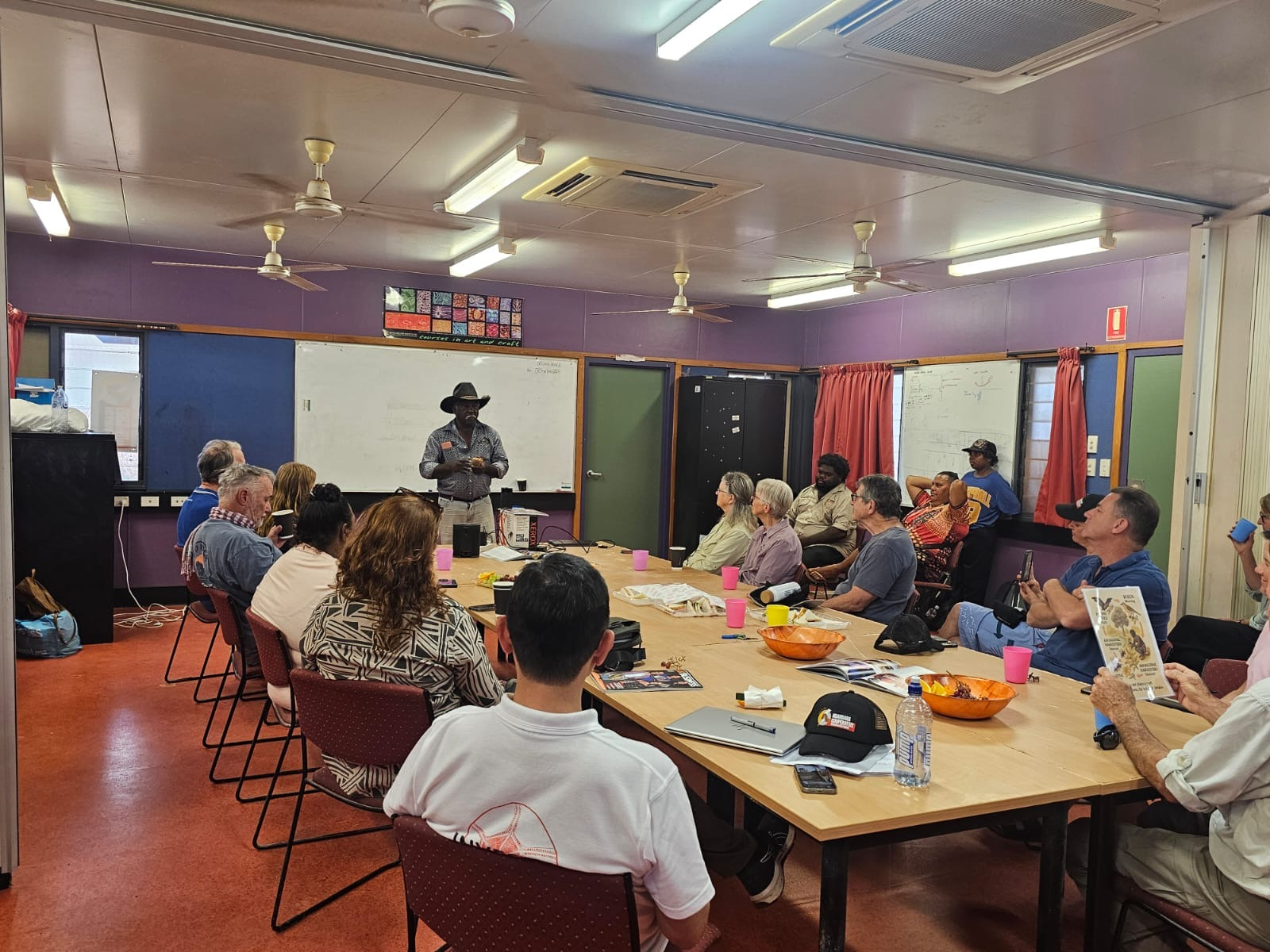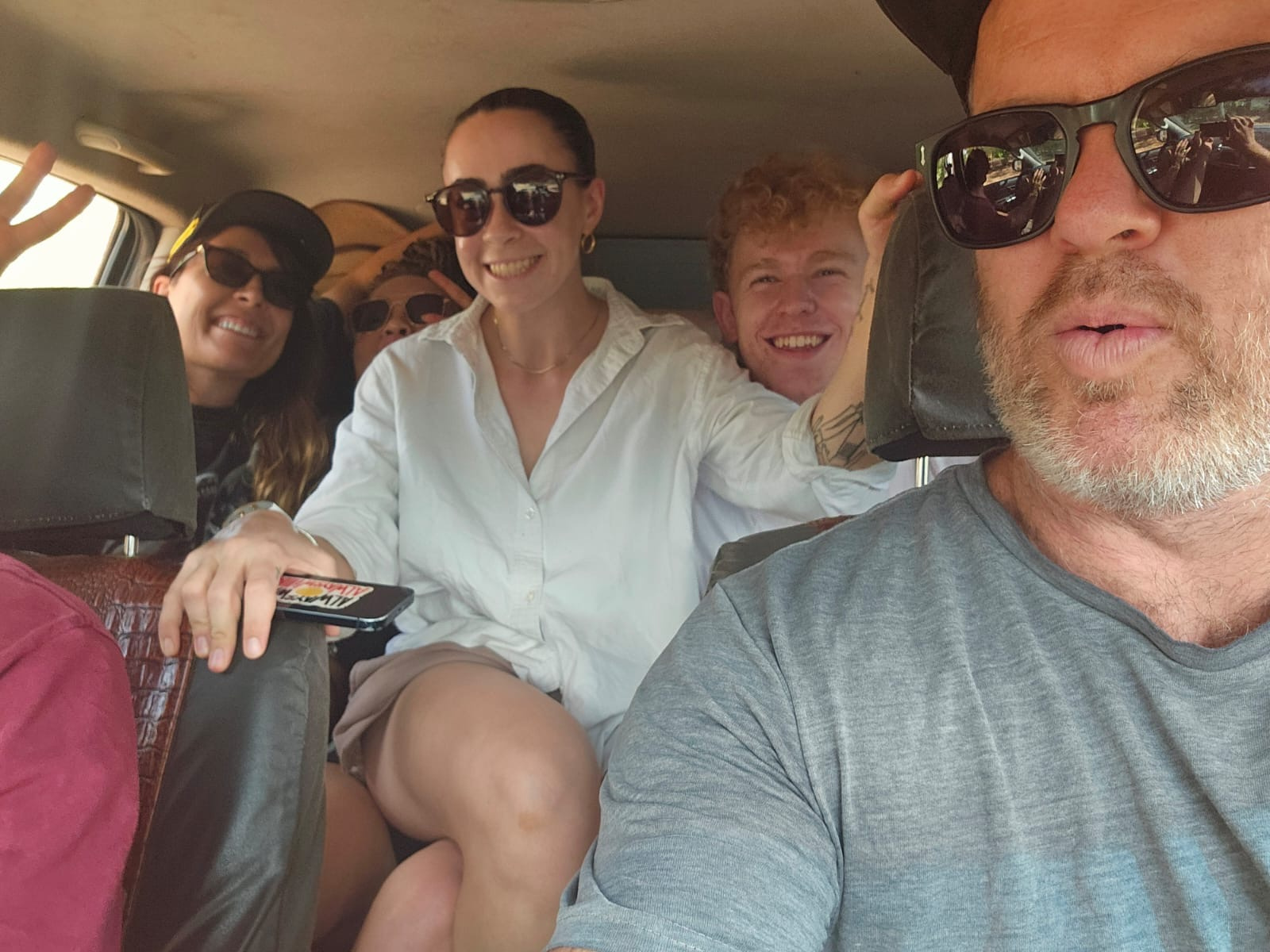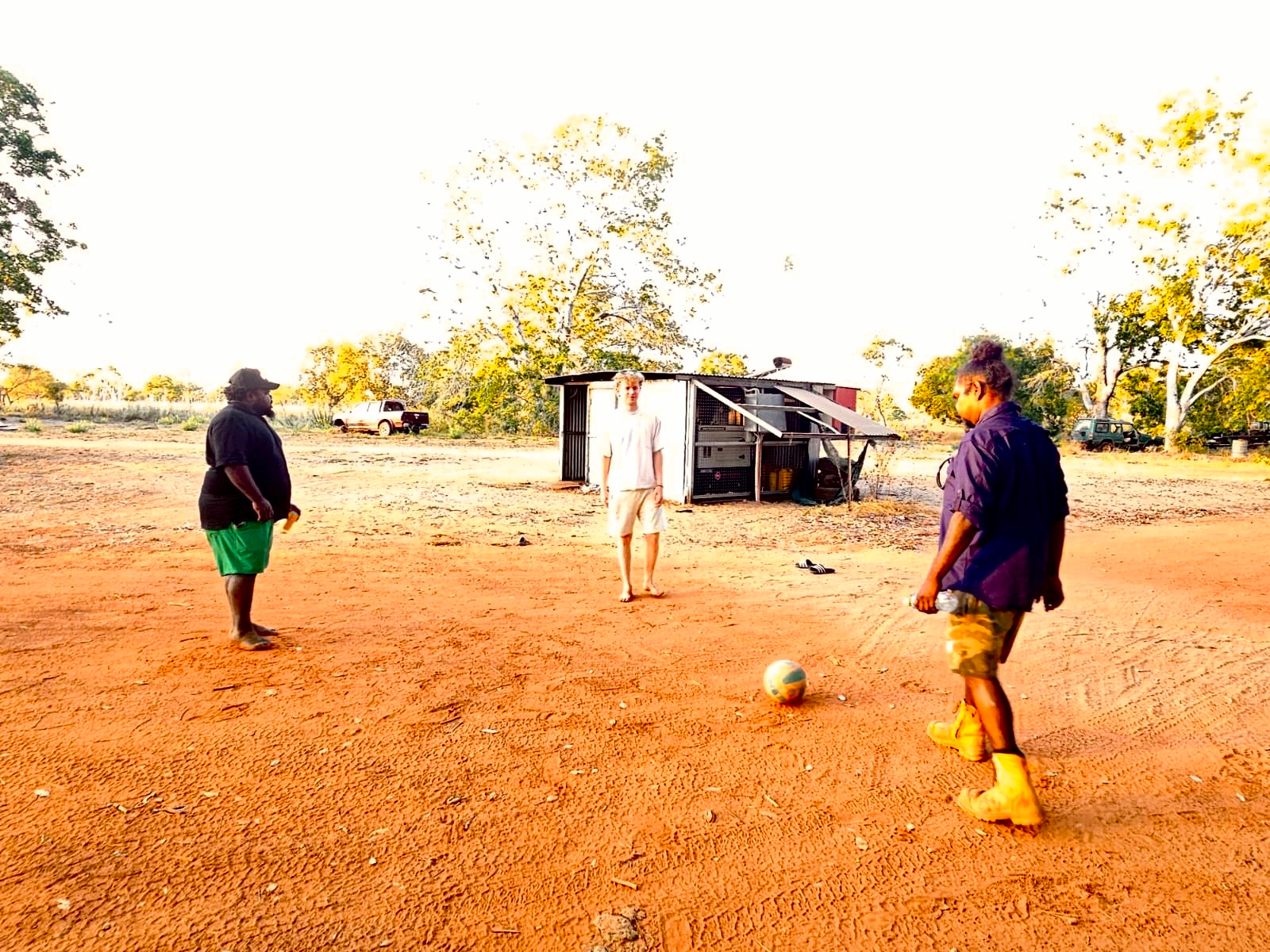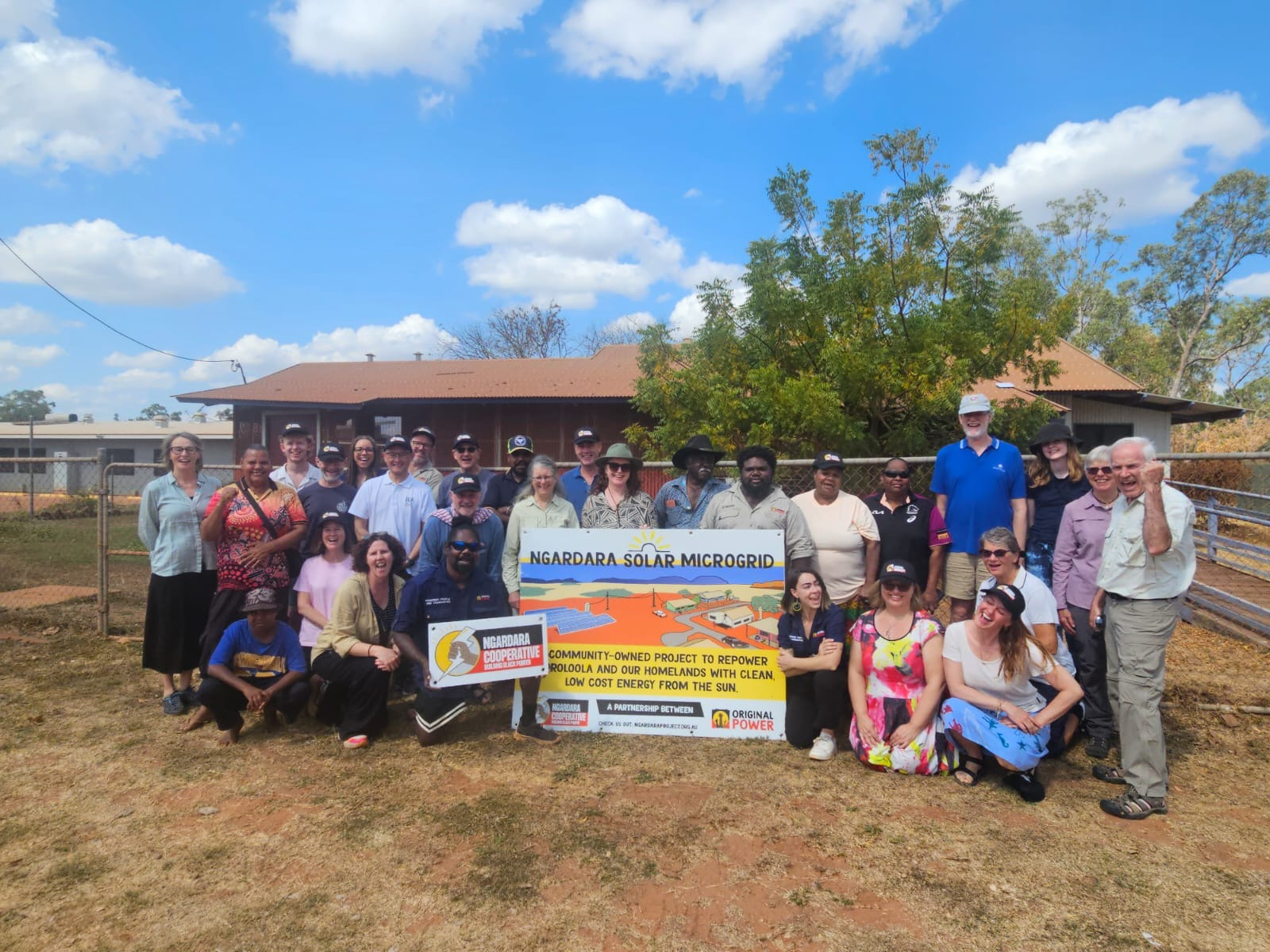Adventures in Australia - The Story of My Leadership in Action Project
Acknowledgement of Country
The author acknowledges the Traditional Owners of Country throughout Australia and recognises the continuing connection to lands, waters, and communities. He pays his respect to Aboriginal and Torres Strait Islander cultures, and to Elders past, present, and emerging.
***
I spent my summer in Australia for my Leadership-in-Action project. A project that took me into the heart of the Australian Outback, it was an experience more inspiring than I could have imagined. Over the course of 6 weeks, I developed 2 independent projects, working to improve energy inequality and increase opportunities for sustainable energy. I travelled with the Original Power team to Borroloola to assist with and learn from their work with the Ngardara (meaning sun in the local Garrwa and Yanyuwa dialect) Co-operative on the first Indigenous owned solar microgrid. I met numerous researchers, professionals, and volunteers across the country.
My research projects were focused on energy opportunities, sustainable and otherwise, across different communities in Australia. Prompted by my once in a lifetime opportunity to visit the Indigenous community of Borroloola, I developed a research project that looked at identifying the effects of pre-paid meter systems on energy inequality in Australia, and then internationally, contributing to wider research on this energy inequality. Simultaneously, I developed a dynamic resource designed to aid everyday people in communities across Australia with their attempts to live more sustainably.
***
From my very first interest in the Laidlaw Scholarship, I was determined to make sure that, if I were fortunate enough to receive the scholarship, I would contribute in a way that was most effective for me. Thus, when it came time to consider the second summer of my scholarship, I knew that I wanted to combine my volunteering with my studies in Engineering, seeking to actively make a difference in a field I was incredibly passionate about.
Indeed, whilst many of the central projects had appeared promising, offering a multitude of sustainability-focused aims, I made the decision to go it alone. Guided by a motivation to learn my own form of leadership, I realized that I needed to embark on a project that didn’t offer the safety net of fellow Laidlaw scholars; I needed to deliberately step out of my comfort zone in order to get the most out of the project. And so, I set out looking for a destination.
***
I had never been to Australia before. On the other side of the world from my hometown in London, it had always seemed an imposing destination. There had never been any real need or reason for me to pack up and set off on a 30 hour flight to a country that is fundamentally the complete antithesis of my London city upbringing. And so, as I delved further into what I wanted to achieve in my Leadership in Action project, I saw it unfold in front of me, combining a desire to use my Engineering knowledge with a step into the unknown. I mean, I couldn’t have found a destination further out of my comfort zone (literally).
With a destination decided, it was time to find a project. After months of emailing, applications, and chasing up loose ends, I finally came into contact with the right person. In Heather Smith, a PhD researcher, who also made up a senior part of the Coalition for Community Energy (C4CE) team, I had found someone willing to contribute to making my project as purposeful and successful as possible. We agreed on some work to be done, researching and implementing tools to encourage sustainability across communities in Australia, and my trip to Australia was confirmed. Even still, this offered no further clarity – the call had ended with ‘come to Australia and we’ll figure out the details from there’. So to say I was a bit nervous was probably the understatement of the century.
 Members of the Borroloola community presenting to potential sponsors
Members of the Borroloola community presenting to potential sponsors
And so, 7 months later, I was on the first of 3 flights, hurtling towards the unknown. As I have already admitted, my initial Leadership-in-Action plans were far from what one would consider perfect. They were undefined and vague: I had agreed to fly to the other side of the world based on a Zoom call, I had no place to stay beyond the first 2 weeks, I had nobody that I knew within the entire Continent or even any of the immediately surrounding Continents.
And yet this meant that the path ahead of me was equally infinite and boundless. I had arrived in Australia without a concrete notion of what lay in store, which in many ways defined my perfect Leadership-in-Action plan. Through my persistence and determination, I was determined to make the most out of the project, finding more and more to do. And, well, if that didn’t do it, I was hoping the sheer loneliness would kick me into action.
***
I spent the first week acclimatizing to my new surroundings. It was unknown, it was full of potential, and most of all, it was hot. So, so hot. I mean I knew it would be warm, but for ‘Winter’, this was really pushing it. But through my sheer will power (air conditioning) and resolve (the swimming pool), I made it through an exhausting, jet-lagged first week.
During the week, I had held a number of Zoom calls with my supervisor, as we looked to establish the project beyond the next week in the future. One of these calls was held with the Original Power team, as well as Thomas Longden, a researcher from Western Sydney University. I didn’t know it then, but this 20 minute call would go on to define my summer (or was it technically winter?). Following a very encouraging conversation, I had found the next step in my project – research on energy inequality in Australia. This was of course completely undefined and vague and had hundreds of details yet to be sorted out (I’m sensing a trend with these researchers), but it was a development nonetheless. And at the end of the call, I asked the question that would ultimately come to define my time in Australia: ‘Can I come with you?’.
You see, the call had focused on research taking place in Indigenous communities across Australia, with a current focus on one particular place. Borroloola. For those who don’t know, and why would you, Borroloola is, as was described to me, ‘5 hours into the middle of nowhere and then 5 hours further from there’. The Original Power team were set to head out there in a week’s time to continue work on the first Indigenous-owned solar microgrid. This was a project that had been in the works for years, and the team were heading there to show the developments to the investors involved.
And I had the nerve to ask if they had the time to babysit a Pom (‘affectionate’ term for an English person) and make sure he didn’t die out in the wilderness. And for some reason, they agreed. I don’t know if they were in a good mood, or if it was my irrefutable charm (self-claimed), or simply if Lady Luck was shining on me that day, but whatever it was, it didn’t matter. I was going to Borroloola.
 Road trip with the Original Power team
Road trip with the Original Power team
My journey to Borroloola was (thankfully) divided over 2 days. Having met up with the Original Power research team, I travelled through the Outback to Mataranka, spending a few days there, before continuing on to Borroloola. 10 hours later, having narrowly avoided several Road Trains (look them up they’re terrifying) on the dirt roads, we had made it to Borroloola.
The week in Borroloola began with introductions. I will admit, I was nervous for these initial meetings; although I had already read the entire 100 page project summary, I still wanted to show that I had something to contribute, that I was here to learn and not just for a quick holiday. But as we arrived, I was immediately seen as a member of the Original Power team, someone who was looking to help. I realized then the significance of Original Power’s work in Borroloola; more than developing a project to change the lives of hundreds of residents, they had gained the respect and trust of the community. They had approached this issue from the side of the community, something completely different to Western ‘help’ of the past. And in having gained this respect, they had earned a bit of freedom, freedom that meant I was treated with this same respect and trust.
Over the course of the week, I tagged along to meetings, got to visit the site of the solar farm, had the opportunity to visit the homes of some of the community members working with Original Power, and even managed to sneak in time for some football (of course). With each day, I learned more about the struggles faced by the residents of Borroloola, and as my knowledge and awareness grew, so did my desire to help make a difference.
 Playing football with Scotty and Conrad, 2 members of the Ngardara Co-operative
Playing football with Scotty and Conrad, 2 members of the Ngardara Co-operative
But suddenly, it was time to leave. Of course, I wanted to stay longer and learn more about the community and their project. But I understood that in order to enable the solar farm to be developed as a community owned project, it was important for the Original Power team to respect the community’s space, to allow the community to make their own project. And so, we made the 10 hour journey back up to Darwin, stopping only for toilet breaks and the occasional wild animal.
***
It was hard for anything to match that experience in Borroloola, but the rest of the trip sure came close. Over the remaining 3 weeks of the project, I travelled across Australia, completing my research. This was mostly online – the official, self-defined task was ‘Developing a Comparative Spreadsheet of the Prevalence and Usage of Pre-paid Meters Internationally’ – but that didn’t stop me from making the most out of my Australia experience. Guided by Heather’s connections, along with my own goals, I set off along the East Coast of Australia, embarking on a self-navigated journey.
Staying in hostels all the way down the coast, I met people of all ages, all with different reasons for being in Australia. Some were looking for work, some were on holiday travels, and some (the most interesting ones) were looking to reinvent themselves. I met others interested in my research, and discussed freely with them, sharing the insights of my work. And I of course found the time to do some sightseeing: the blinding kaleidoscope that is the Great Barrier Reef, the resplendent sunrise on the Gold Coast, the engineering miracles of the Sydney Opera House.
I finished my travels down in Sydney, where I met up with Thomas Longden, the researcher who had mentored me with regards to my research, helping me find sources and contacts or advising my writing. We shared a few drinks as I explained the journey I had undertaken, seeing all of Australia (I mean not really that much, Australia is huge).
 Photo with the Ngardara Co-operative and potential project investors.
Photo with the Ngardara Co-operative and potential project investors.
It was that moment, sitting in an Australian pub, that I realized that I didn’t want this experience to end. I didn’t mean my time in Australia – whilst I wanted to stay, I had a flight to catch after all. I didn’t mean my research, although this in fact has not ended, as I keep piling more onto my plate. I meant that feeling of embracing the unknown, that spontaneity, that freedom that I had developed during my trip to Australia. I want to make sure that as I approach my future, I remember this experience, using it to guide me.
As I reflect on my travels in Australia, I am overwhelmingly pleased with how it turned out. Through my research I combined my technical knowledge with a desire to learn about and help fight the issues facing the community members of Borroloola. I developed my leadership skills in exactly the way I had intended all those months ago, embracing the novelty of Australia, the surroundings, the people, the communities. I deepened my understanding of myself as a ethical leader, trying to help those struggling in Borroloola, and indeed other Indigenous communities, in whatever way I could, trying to make a real difference. I carry with me the new notion of respect that I discovered in Borroloola, appreciating the importance of relationship in every action.
But most importantly, my time in Australia taught me not the fear the unknown. It has taught me that sometimes in life, it is important to act without thinking, to simply say yes and see what happens. And for this I am forever grateful.
Acknowledgements
I am incredibly grateful to the Laidlaw Foundation and the University of Durham for granting me the opportunity and the funding for my journey. Thank you to Kelci Jacoby, as well as the entire Durham University Laidlaw Team, for all of their hard work in enabling myself and the other Durham scholars to truly make the most out of this experience. I am incredibly grateful to the Original Power and Ngardara Co-operative groups for being so incredibly welcoming and inviting me to Borroloola. I wish them both the best with the Borroloola solar project and look forward to hearing updates. I am similarly thankful to Thomas Longden for providing me with research directions to proceed in and helping enable my research. Finally, I also want to thank Heather Smith for agreeing to mentor and support my Leadership in Action summer; right from the start, she was committed to helping me; even when neither of us had a clear plan, she worked hard to make sure we made the most out of it. I truly could not have completed this summer without her. Thank you.


Please sign in
If you are a registered user on Laidlaw Scholars Network, please sign in